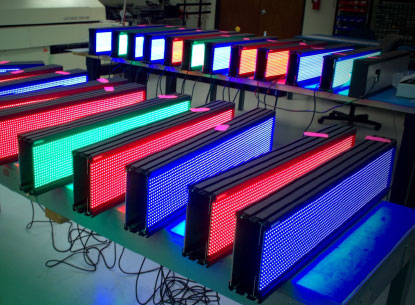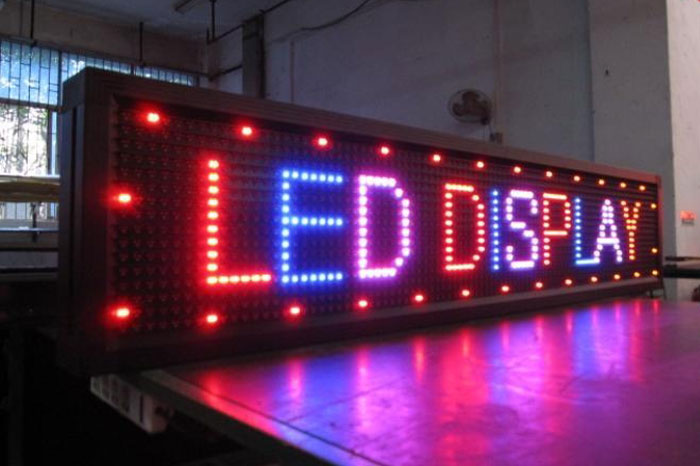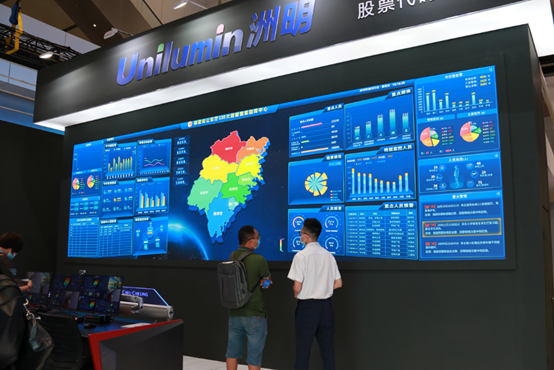Best Info For Picking Cob Led Display
Best Info For Picking Cob Led Display
Blog Article
When You Look At Led Displays, How Important Are The Pixel Pitch And Resolution?
When looking at LED displays, it is crucial to look at the resolution as well as pixel pitch. Both of these factors directly affect the clarity, detail and overall visual experience provided by the display. They are essential for the following reasons:
1. Image Quality
Pixel Pitch The distance between the centers of each LED's pixel and the centers of the subsequent pixels is known as the pixels pitch. Smaller pixel pitches mean that LEDs are less spaced, which results in better resolution and a higher pixel densities. This results in sharper, more detailed images, particularly important for images with fine details or text.
Resolution is the total number pixels on a screen. This is often described as a ratio of width to height (e.g. the resolution is 1920x1080). A higher resolution allows for more detail to be displayed and creates an immersive experience. This is particularly important for large-screens, as the viewer is situated close to the screen.
2. Viewing Distance
Pixel pitch and optimal distance for viewing are closely connected. For displays that are observed from a short distance, such as indoor screens or those used in exhibitions or retail displays A smaller pixel pitch (and consequently a greater resolution) is crucial to prevent pixelated images. A larger pixel size may suffice for large outdoor displays or billboards which will be observed from afar.
3. Content Versatility
Displays that have higher resolutions and smaller pixels are able to display more content types. From HD high-definition videos to simple graphics and text they're capable of handling a broad range of formats. This flexibility is crucial for applications such as broadcast studios, digital signage and control rooms.
4. Costs
The cost of a display will increase significantly as the pitch of a pixel is reduced. High resolution screens are more expensive to produce because of the higher amount of LEDs that are required. Take into consideration the use and viewing distance when balancing the need for high resolution and budget.
5. Application Specificity
The significance and importance of pixel pitch may differ according to the software you're using:
Indoor Displays: Smaller pixels (e.g. 1.2mm up to 2.4mm) is typically required to achieve high resolution when viewing at close distances.
Outdoor Displays - May feature larger pixels (e.g. an pixel pitch of 4mm-10mm) because they are viewed from a larger distance and high resolution may not be necessary.
6. The durability and upgradability
As technology for display advancements, the pixel pitch will decrease, allowing greater resolutions on smaller areas. By investing today in a display with ideal pixel pitches that are more effective and relevant for a longer period of time. This means that you don't have to replace screens often.
Conclusion:
Pixel resolution and pitch have a significant impact on making the best use of LED displays, especially in relation to images, viewing experience, and content flexibility. To ensure you select an LED display that is compatible with your requirements, consider the following aspects when looking into LED displays. Read the top 3d led display for website examples including tv the wall, led in walls, led in the wall, outdoor digital screens, led display rental, rental led display screen, led display screen, outdoor digital display, led screen display rental, led board rental and more.
What Is The Importance Of The Angle You View From When Searching For Led Displays?
It is important to consider the viewing angle while researching LED displays. Especially for applications in which it is viewed on a variety of angles and from various positions. The viewing angle is important due to a variety of reasons.
1. Uniform Image
Definition: The viewing angles of LED displays correspond to the maximum angles where the display can be viewed in a way that provides an acceptable visual performance, usually in terms of intensity or color uniformity. The viewing angle is defined in both the horizontal as well as vertical directions.
Important: A wide viewing angle will ensure that the image stays constant no matter what position the viewer occupies in relation to the display. It signifies that the brightness and colors aren't affected when viewing from above or below, or from the sides.
2. Audience Experience
Impact on large venues. In large spaces like stadiums, concert halls, as well as conference centres, the audience members are spread across a broad space. Displays with a narrow viewing angle may result in poor viewing or a poor quality image for those sitting at high angles.
Application: In large-scale installations or events where the audience is placed in the arc of a large area an extended viewing angle is necessary to ensure that everyone get a clear, vibrant picture of the content being displayed.
3. Suitability for Public Spaces
When displaying in public areas, such as in shopping malls, transport hubs as well as outdoor advertising, it is crucial to think about the angle of vision because people are likely to view the display from every direction. A narrow viewing angle can reduce the impact and engagement of the display.
Application Digital signage: When employed in public spaces, the wide viewing angle will increase the display's reach. This makes sure that information is easily visible from all angles, and is appealing.
4. Content Consistency
Brightness and color uniformity display with low viewing angles can show color shifts or decreases when viewed from angles away from the center. This is a concern for content that is related to brands, and where the accuracy of color and consistency are important.
Application Wide viewing angles is ideal for environments that require brand consistency and identity, such as retail or corporate environments.
5. Installation Flexibility
The ability to install a display which has a wide viewing area allows for more flexibility. For instance, it offers more innovative placement options like placing the display on columns or placing it in areas that viewers approach from different directions.
Applications: LED displays that have a wide viewing range are ideal for architectural or creative display. This includes those in galleries, museums as well as immersive experiences.
6. Renting and staging the performance
Event Settings in rentals and staging in which displays are placed in a variety of settings and locations, a wide viewing angle ensures that the display performs efficiently in various settings and provides the same quality, regardless of the location of the audience.
Application: For events, concerts, or trade shows in which the audience can be moved around or the screen is seen from multiple locations, a wide viewing angle ensures that all attendees are able to enjoy a clear view of the content.
7. Impact on ROI
Enhancing the visibility of Displays: A screen which has a wide viewing area can better engage with a wider audience. This could enhance its impact and improve return-on-investment (ROI). It is very important to maximize visibility for advertisements or screens which provide information.
Application: When it comes to commercial displays, it can be beneficial to ensure the display is easy to see from every angle. This increases the amount of engagement and, consequently it improves the effectiveness.
Conclusion:
The angle at which the display is viewed is directly influenced by the effectiveness, clarity and consistency of LED display. It is especially important in environments where the audience is spread out, where the display may be viewed from different positions, or where content consistency is critical. It is crucial to consider wide angles of view when viewing LED display. This will ensure that they are able to meet the specifications of your specific application while providing a high quality viewing experience for users. Read the top led rental screen for more advice including screen led display, display screens, led panels, flexible led screen display, flexible led screen, led rental screen, board led, led screen panels, video walls, led panel transparent and more.
What's The Importance Of Roi, Cost, And Energy Efficiency In Choosing Led Displays?
Cost, ROI (Return on Investment), as well as energy efficiency are extremely relevant when analyzing LED displays since they directly impact the viability of financial investment, long-term benefits, and operating costs of the investment. Each of these factors each has their own significance.
1. Initial Cost
Budget considerations: The initial cost of buying LED displays is a significant factor for any project. It is not only the cost of the display but also the expenses of installation, mounting structures, as well as any accessories required.
Quality Compare. Cost: While displays with lower prices are initially attractive however, there could be compromises regarding quality, durability or feature. It's important to balance the initial price with the performance you want and the durability of the display.
Application: Where budgets are tight, careful analysis of performance versus cost is crucial. In certain situations, expensive displays might be needed to promote important projects such as advertising on prime locations. Other times, more affordable options may be sufficient in environments that are not as demanding.
2. Return on Investment
Revenue Generation: ROI is often related to the capability of LED displays to generate income. This can be through advertising, customer engagement or brand visibility. Displays that offer engaging content and attract attention can boost sales or revenue.
Durability and longevity Displays that are of better quality, with a longer lasting lifespan and longer lasting tend to have an increased ROI due to the fact that they require less frequent maintenance and are less costly to maintain. The initial investment is worth it over the long term.
Effect of features on ROI Features such as high resolution, wide viewing angle, and high brightness can increase the upfront cost but also increase the efficiency of the display. This can result in a higher ROI by improving audience interaction and visibility.
3. Energy Efficiency
Operational Costs - Efficiency is key to reducing the operational expenses of LED displays. Displays that use less power can result in lower energy bills. This is especially important when it comes to large displays or those which operate 24 hours a day.
Environmental Impact: Energy-efficient displays contribute to sustainability goals by reducing carbon footprints. This is crucial for businesses and organizations that are committed to environmental responsibility or must comply with regulations governing energy usage.
Long-term savings - Although an displays that are energy efficient may cost more initially, the savings in electricity over the lifetime of the display are substantial and can increase the ROI.
Application: If installed in regions with high electricity costs or in large installations the energy efficiency will make an impact on the total cost of operation.
4. Total Cost of Ownership
Maintenance and repairs. The total cost of ownership doesn't only include the initial purchase price, it also includes all expenses associated with maintenance, repairs and downtime. TCO is generally lower for displays that last and last for longer and last longer, making them a better long-term investment.
Upgrades and Scalability. Consider the possibility of scaling or upgrading the display. A modular system that can be easy to expand or upgraded at little expense could be a more lucrative long-term purchase.
Application: In environments in which displays are expected to last for a long time, such as corporate settings public spaces, public spaces, or retail spaces that are heavily populated, focusing on TCO makes sure that the investment remains cost-effective over time.
It is possible to finance the purchase using several choices.
Financing options: A lot of suppliers offer flexible financing and leasing plans that make it easy for you to pay upfront costs on high-quality displays. This is especially useful for businesses that wish to make investments in digital signage and keep their cash flow.
The benefits of leasing is also able to influence the return on investment. Leasing lets businesses upgrade technology to newer models without needing to make large investments.
6. Market Competitiveness
Cost vs. Cost and ROI of the LED display could affect your competitiveness. A better-performing display will help you to stand out from rivals. This could attract more customers and clients which will result in a higher ROI.
Application: In highly-competitive industries like entertainment, retail or media, investing in a higher-quality display equipment that has a higher ROI can provide a huge benefit.
Conclusion:
The value of LED displays and their longevity depend on factors such as cost, ROI, energy efficiency, and the return on investment. To ensure the display will meet both performance and financial expectations it is crucial to evaluate the initial price against the expected return. Energy efficiency can be considered in order to cut down on operating expenses. These factors are important for making a decision compatible with your budget and goals for the future. Follow the best flexible advertising boards for website recommendations including led rental screen, led light board, led screen display, led screen display, outdoor display led, board led, display device, led panels, led panel rental, outdoor led screen and more. 